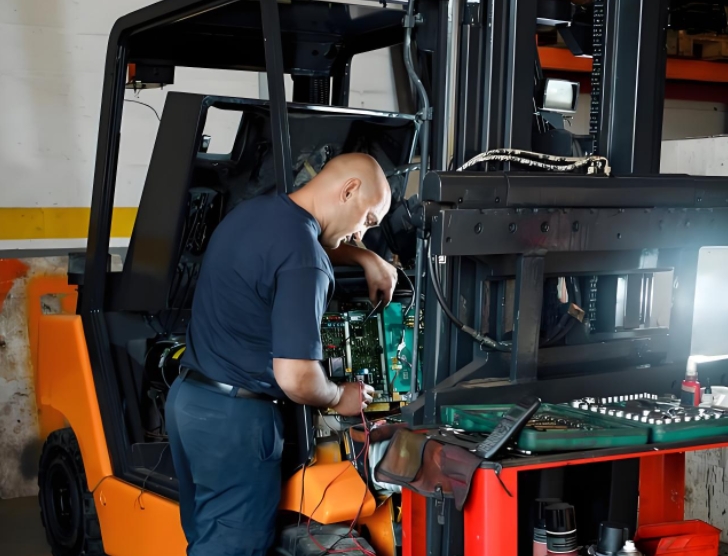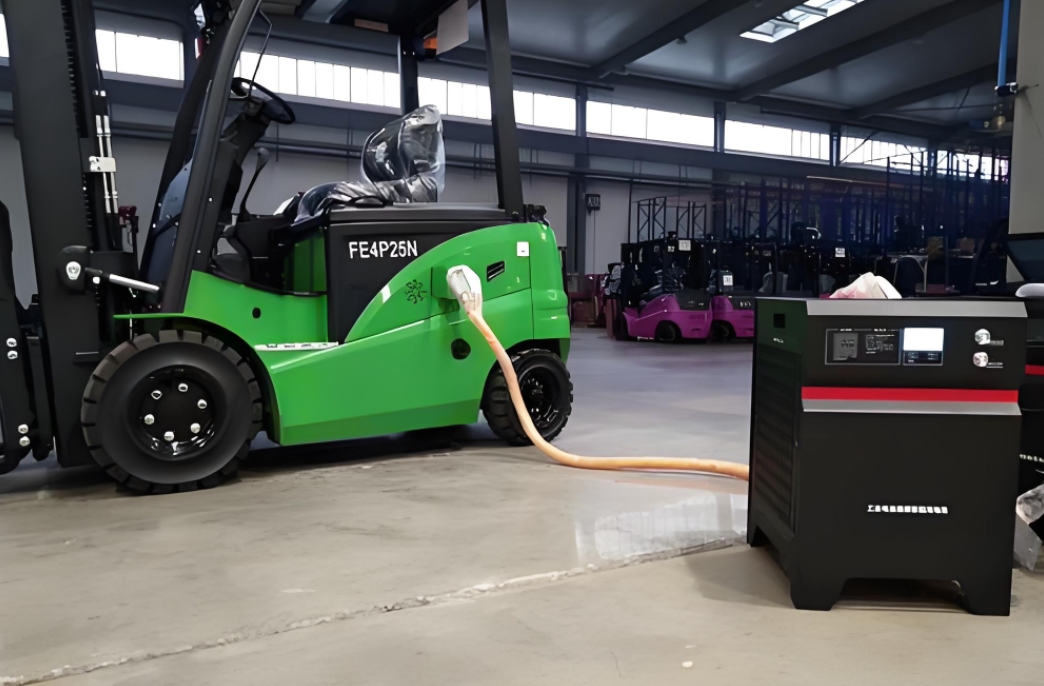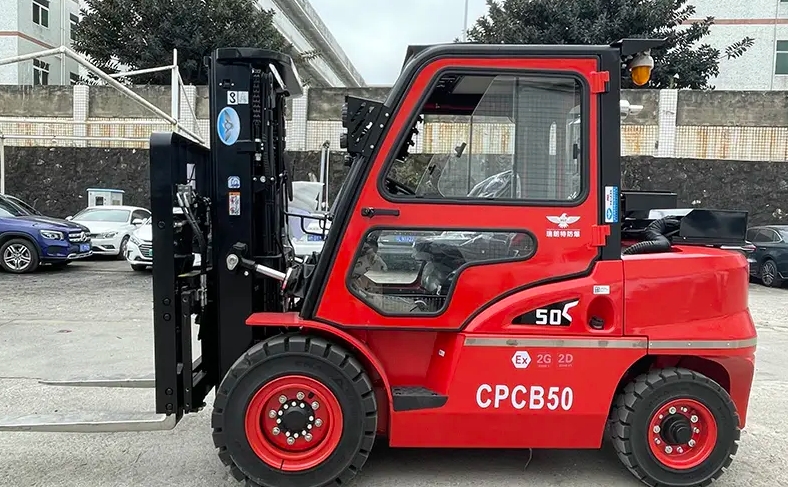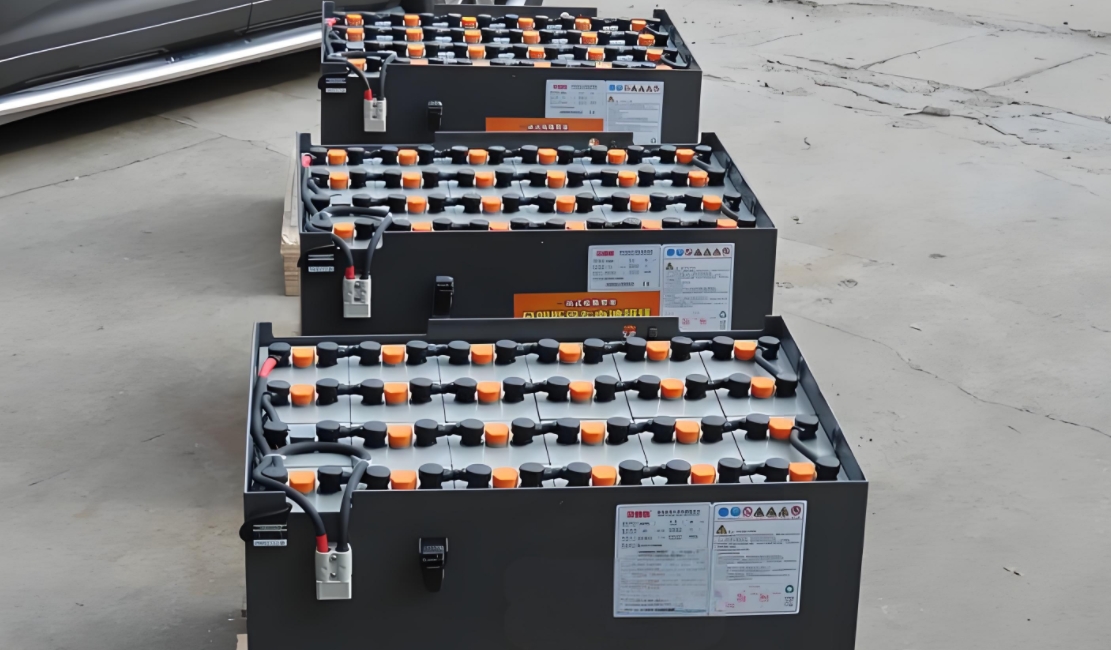Blog
Troubleshooting Guide for Electric Forklift Unable to Start

Comprehensive Troubleshooting Guide: What to Do When Your Electric Forklift Won’t Start
1. Introduction: Systematic Approach to Forklift Diagnostics
An electric forklift failing to start is one of the most frustrating and common issues in material handling operations. Unlike automotive problems, forklift electrical systems involve complex interlocks, controllers, and safety protocols that require methodical diagnosis. This guide provides a structured, step-by-step approach to identifying and resolving the root cause of a no-start condition in your Yuweida electric forklift, helping you minimize downtime and avoid unnecessary repair costs.
Before attempting any repairs, always prioritize safety. Ensure the forklift is on a level surface, the parking brake is engaged, the forks are fully lowered, and the key switch is in the “OFF” position. Disconnect the main battery power before inspecting electrical components.
2. Step 1: Initial Assessment and Basic Checks
Often, the simplest solutions are overlooked. Begin with these fundamental checks:
- Battery Connection: Verify the battery is fully seated and the main connector is tightly secured. A loose connection can completely interrupt power.
- Battery State of Charge (SOC): Check the battery indicator on the dashboard or use a voltmeter. A completely discharged battery will not engage any systems. A voltage reading below the manufacturer’s specified minimum (e.g., below 80% of nominal voltage for lead-acid) indicates a need for charging.
- Key Switch Position: Ensure the key is turning fully to the “ON” position. A faulty key switch can prevent the control circuit from energizing.
- Emergency Stop Button: Verify that all emergency stop buttons (on the dashboard and potentially elsewhere) are fully disengaged and reset.
- Directional Selector: Ensure the directional lever (forward/neutral/reverse) is firmly in the “NEUTRAL” position. Most forklifts have a neutral safety switch that prevents starting in gear.
3. Step 2: Diagnosing Power and Electrical Supply Issues
If basic checks yield nothing, proceed to electrical diagnosis.
- Fuses and Circuit Breakers: Locate the main fuse panel (usually near the battery compartment or controller). Inspect all fuses visually or with a multimeter for continuity. Replace any blown fuses with ones of the exact same amperage rating.
- Main Contactor: Listen for a distinct “click” when turning the key to “ON.” This sound often indicates the main contactor (a large relay) is engaging. If there’s no click, the contactor or its control circuit may be faulty.
- Multimeter Testing:
- Battery Voltage: Measure voltage at the battery terminals. A 48V battery should read ~50.5V when fully charged. A reading below ~46V may be too low for the controller to operate.
- Key Switch Power: Test for power at the key switch input and output terminals when turned on.
- Ground Connections: Check for clean, tight, and corrosion-free ground connections on the chassis and controller. A poor ground can cause complete system failure.
4. Step 3: Investigating Safety Interlock Switches
Electric forklifts are equipped with multiple safety switches that must be engaged for the system to start.
- Seat Switch: Prevents the forklift from operating if the operator is not seated. Bypass it temporarily (for diagnostic purposes only) by unplugging the connector and jumping the terminals with a fused jumper wire. If the forklift starts, the seat switch needs adjustment or replacement.
- Brake Pedal Switch: Requires the brake pedal to be depressed to start. Test it similarly to the seat switch.
- Neutral Switch: Located on the directional control assembly. It must signal that the unit is in neutral. Test for proper operation with a multimeter.
- Overhead Guard Switch (less common): Some models have a switch that detects if the overhead guard is properly latched.
- Plugged-in Charger Interlock: Prevents the forklift from driving while the battery charger is connected. Ensure the charger plug is fully disconnected.
5. Step 4: Interpreting Error Codes and Controller Diagnostics
Modern Yuweida electric forklifts feature intelligent controllers that display error codes.
- Dashboard Display: Look for flashing lights or alphanumeric codes (e.g., E05, E12) on the dashboard. These codes are the most direct clue to the problem.
- Code Interpretation: Consult the forklift’s manual for the meaning of specific codes. Common critical codes include:
- E01 / Communication Error: Fault in communication between controllers.
- E05 / Accelerator Error: Fault in the accelerator pedal potentiometer.
- E11 / High Voltage: Battery voltage too high.
- E12 / Low Voltage: Battery voltage too low to operate.
- E41 / Brake Error: Issue with the brake circuit.
- Controller Reset: Sometimes, a “hard reset” can clear a temporary fault. Disconnect the main battery power for 5-10 minutes, then reconnect. This will often clear non-critical error codes.
6. Step 5: Advanced Component Testing
If the previous steps haven’t identified the issue, focus on key components.
- Accelerator Potentiometer: This device tells the controller how fast to go. A faulty “pot” will often throw an error code. Testing involves checking its resistance values across different pedal positions with a multimeter.
- Key Switch: Test for continuity between terminals in the “ON” and “START” positions.
- Main Contactor: Test the low-voltage control coil for resistance and the high-voltage contacts for continuity when energized.
- Battery Disconnect Switch: If equipped, this switch can fail internally, preventing power from reaching the controller.
7. Step 6: Hydraulic System Interlocks (If Applicable)
Some no-start conditions may be related to hydraulic system protections.
- Hydraulic Pressure Switch: If the hydraulic pump is seized or overloaded, a pressure switch may prevent starting to protect the system.
- Tilt/ Lift Interlock: Ensures the mast is in a neutral position for safe starting.
8. Step 7: When to Call a Professional Technician
Know your limits. Contact Yuweida technical support or an authorized service provider if:
- The troubleshooting points to a faulty motor or controller. These are complex, high-cost components requiring specialized tools and knowledge to replace.
- You have performed all checks but are still unable to identify the fault.
- The forklift has recurring electrical problems.
- You are not comfortable or trained to work with high-voltage DC systems.
9. Preventive Maintenance to Avoid No-Start Situations
The best repair is prevention. Integrate these checks into your regular schedule:
- Daily: Visually inspect battery connections and cable condition. Check for error codes on startup.
- Weekly: Test operation of safety switches. Clean battery terminals and apply anti-corrosion spray.
- Monthly: Perform a thorough inspection of all electrical connections for tightness and corrosion. Check fuse integrity.
- Annually: Have a certified technician perform a full system diagnostic, including controller and motor health checks.
10. Conclusion: A Methodical Path to Resolution
A no-start condition is not a single problem but a symptom. By following this logical, step-by-step guide—from the simplest checks to the more complex diagnostics—you can efficiently isolate and resolve the vast majority of issues that prevent your electric forklift from starting. Documenting the process and any found solutions will create a valuable knowledge base for your team, reducing future downtime and ensuring your material handling operations run smoothly and profitably.
For further assistance with specific error codes or complex electrical faults, always refer to your Yuweida operator’s manual or contact our expert support team directly.



